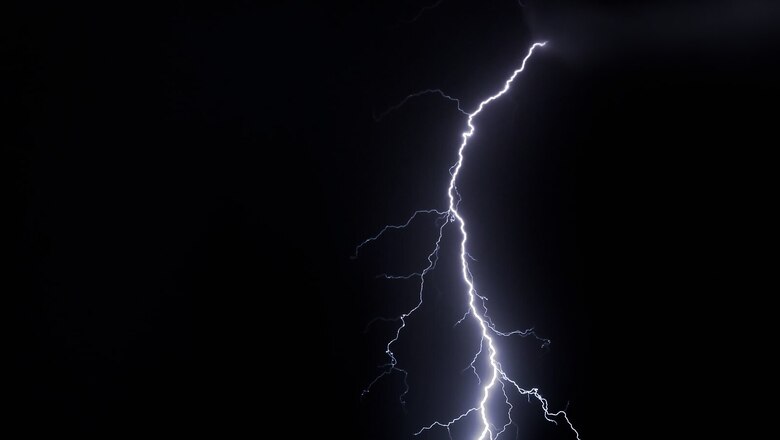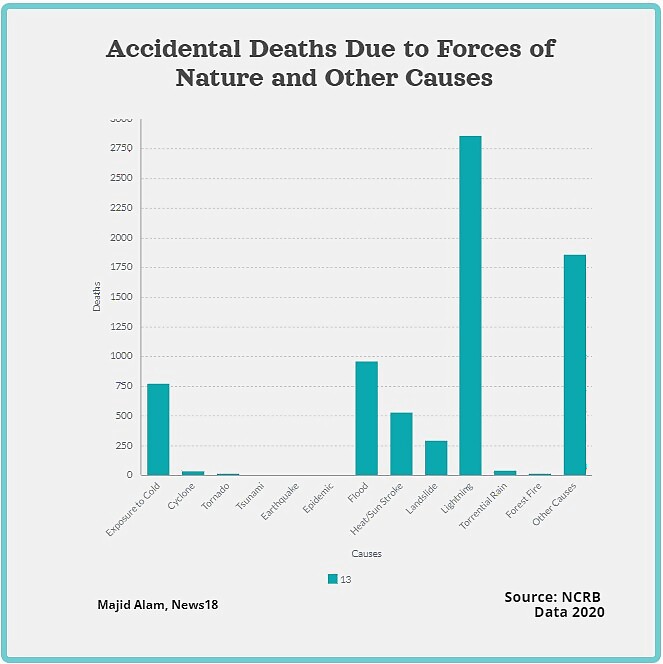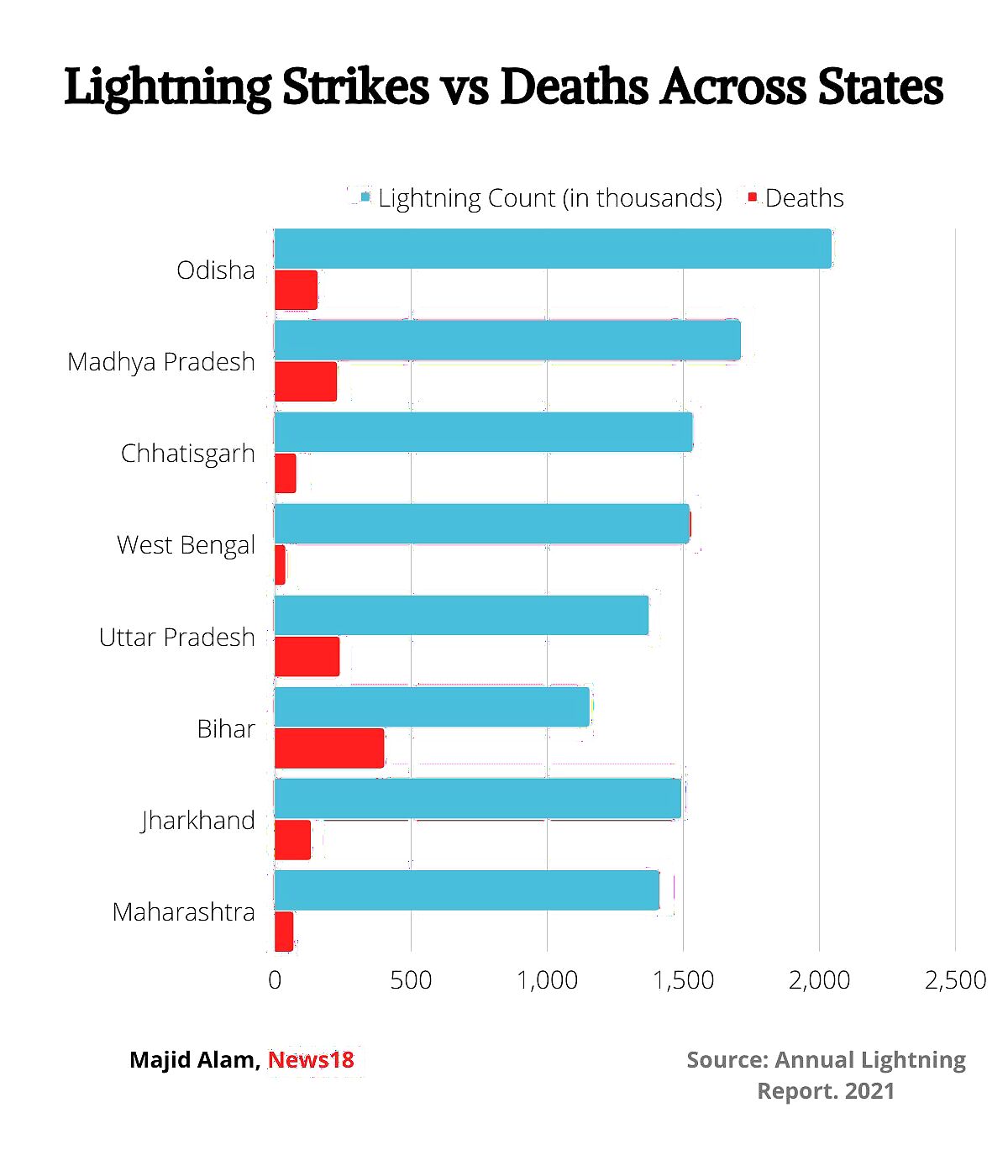
views
Sixteen people died of lightning strikes and thunderstorms across multiple districts in Bihar on Tuesday. Four people died in East Champaran district, three people each were killed in Bhojpur and Saran, two people each in West Champaran and Araraia, and one person each in Banka and Muzaffarpur.
Earlier on June 20, 17 people had died in lightning strikes across the state. So far, the death tally due to the natural phenomena has reached around 36 with the onset of monsoon in June.
With the onset of the monsoon in North India, 17 people died last week due to lightning and thunderstorm-related incidents in Bihar. Six deaths were recorded in Bhagalpur district, three deaths were reported from Vaishali, Banka and Khagaria reported two deaths each and Munger, Katihar, Madhepura and Saharsa reported one death each.
Although deaths due to lightning are reported as isolated incidents, the natural phenomenon, common during the monsoon, leads to more casualties, and even unaccounted deaths, than floods and cyclones in rural parts.
Lightning has led to 1,697 deaths between 2020 and 2021, with a majority of the deaths reported in north Indian states, according to Annual Lightning Report 2020-2021, published jointly by the Ministry of Earth Sciences, Indian Meteorological Department and other government agencies.
“In North India, three states have become a challenge for us — Uttar Pradesh, Bihar and Madhya Pradesh, where over 1,500 people die due to lightning. This is the official data because they get compensation. The tally could be higher,” said Sanjay Srivastava, who works at Climate Resilient Observing Systems Promotion Council (CROPC), one of the agencies that contributed to the Lightning report mentioned above.
Bihar reported 401 deaths, Uttar Pradesh 238, Madhya Pradesh 228 deaths and Odisha 156, according to the report.
The deaths are a result of rising frequency of lightning strikes, a change which is also acknowledged in the government data. According to the report, a surge of 34% in lightning strikes was recorded in the country, which went up from 1.38 crore in 2019-2020 to 1.85 crore in 2020-2021, an increase of 46.83 lakh across the country in a year.
JUST TIP OF THE ICEBERG?
Although government agencies such as the Lightning Resilient Campaign India and National Crime Records Bureau (NCRB) record deaths due to lightning, experts say the numbers are underreported.

“Although the death rate in the country is between 2,000 and 3,000 every year, there is no proper data,” said Prof Dr GR Nagabhushana, Former Professor and Chairman, Department of High Voltage Engineering at Indian Institute of Science, Bengaluru.
According to Prof Nagabhushana, although government agencies attempt to record the data, the authenticity remains in question.
“If a person is dead due to lightning, the doctor must declare the main cause. If it is lightning, they must declare it and it must be fed to a government agency for a record,” Nagabhushana added.
CLIMATE CHANGE TRIGGERS
Experts say the present rise in lightning strikes and resultant deaths must be attributed to climate change.
The melting of glaciers is adding moisture to the air and global warming is adding heat, thereby increasingly contributing to the two main reasons behind lightning, Srivastava said.
“Global warming is increasing the temperatures and moisture is also increasing as Himalayas are melting. When the water in the sea is warm, it will produce more vapours. Two main components which are needed for lighting are increasing — hot earth and water vapours, which is why there is an increase in the incidents,” Srivastava added.
RURAL AREAS WITH MAXIMUM DEATHS
According to government records, more than 96% of the casualties due to lightning are in rural areas.
“We carried out risk assessment of geographical features of villages such as the areas at a height, be it trees or peak of mountains or electric poles. Apart from this, the lightning vertically hits the ground and spreads around in circular manner. It is unable to spread in urban areas due to buildings, but in villages the area is clear, so it falls on the farms and spreads across the whole area,” Srivastava said.
More deaths happen in the farms, killing those working around it or near rivers and ponds where water acts as a good conductor, he added.
REASON TO WORRY
According to the NCRB data, lightning is a major cause of deaths among the accidental deaths caused by natural forces.
In 2020, 2,862 people died due to lightning strikes, significantly higher than other known causes such as cyclone (37), heat strokes (530) and floods (959).

Lightning strikes have significantly increased manifold in states namely Bihar (168%), Punjab (331%) and Haryana (164%).
It is a cause for worry as these agricultural states have more people who are linked to agricultural activities and spend more time in the open areas.
Nagabhushana added that educating the people on the issue, especially in rural areas, could change the trend as the practice has considerably reduced the deaths in the US, from over 300 annual deaths a few years ago to the current 30-45.
Read all the Latest News , Breaking News , watch Top Videos and Live TV here.




















Comments
0 comment